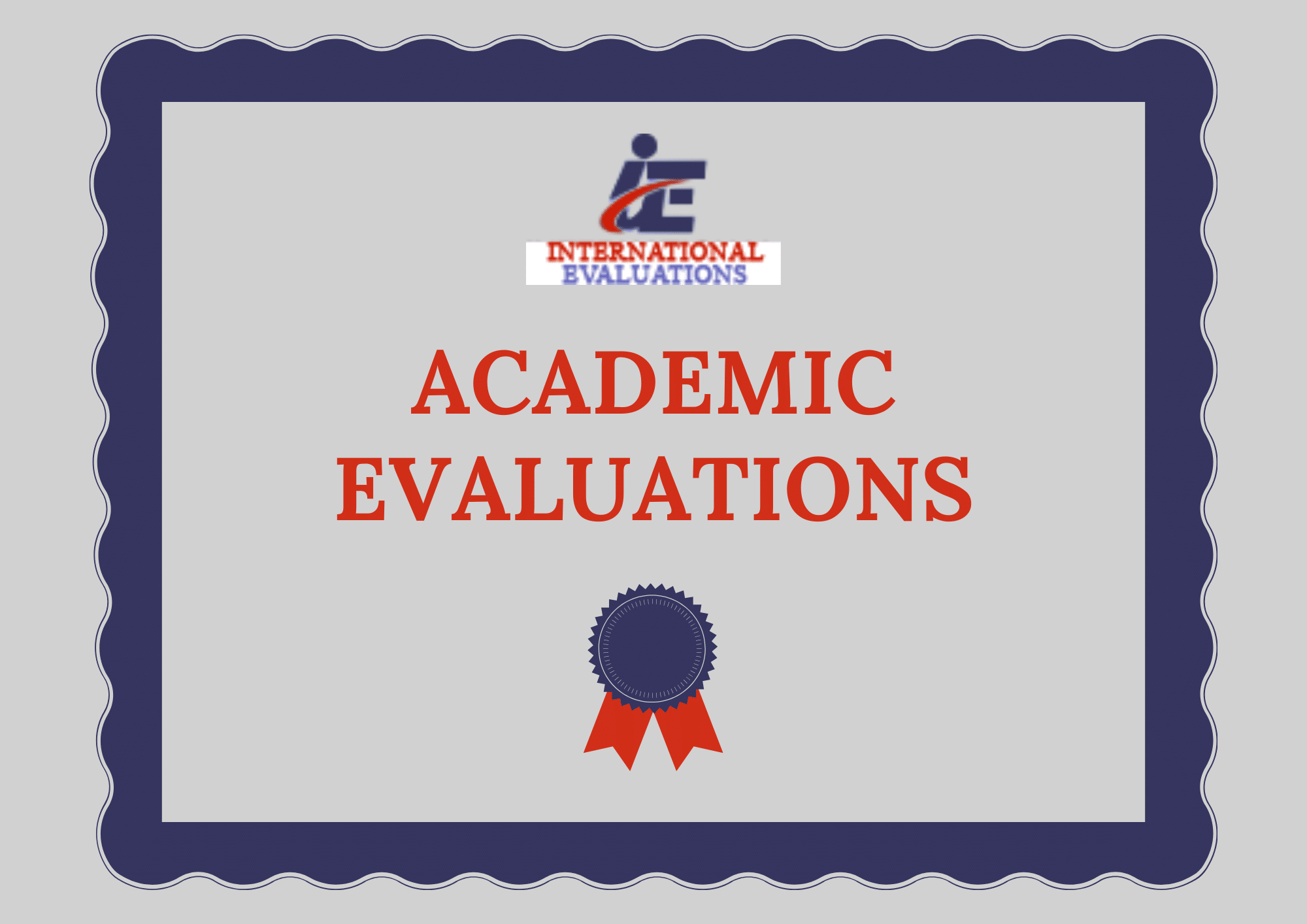Introduction
In today's globalized world, college credentials are progressively valued across nationwide boundaries. Many people look for to advance their jobs or go after academic opportunities in different nations, necessitating a detailed understanding of their scholastic qualifications. This is where international credential analysis services entered play, helping both individuals and establishments in verifying the credibility and similarity of international scholastic credentials.
Among the various techniques of credential analysis, the course-by-course credential evaluation sticks out as a thorough approach that gives a comprehensive analysis of an individual's academic records. This article will certainly check out the nuances of course-by-course evaluations, detailing what they require, why they are essential, and exactly how they can influence one's occupation trajectory.
What is Course‑by‑Course Credential Evaluation?
Definition and Purpose
A course-by-course credential evaluation includes a comprehensive evaluation of each course noted on an academic records. This analysis not only translates grades and credit scores yet likewise analyzes the content and roughness of each training course taken by the pupil. The main goal is to establish exactly how these courses line up with educational criteria in an additional country.
Importance of Course‑by‑Course Evaluations
Why is it necessary to perform a course-by-course examination? For people planning to study or function abroad, this sort of evaluation can supply beneficial understandings into how their previous academic experiences translate in a new context. It assists establishments in making informed choices concerning admissions, hiring, or licensure.
The Refine of Course‑by‑Course Credential Evaluation
Step 1: Record Collection
The initial step in any kind of academic credential evaluation process is collecting necessary documents. This commonly includes:
- Official transcripts Degree certificates Course curricula (if readily available)
Having these papers ready enhances the examination process.
Step 2: Review and Analysis
Once documents are collected, evaluators diligently assess them for authenticity and efficiency. Each program is assessed based upon a number of requirements:
- Credit Hours: The number of credit reports were assigned to each course? Grades: What qualities were achieved? Course Content: What subjects were covered?
Step 3: Comparison with Local Standards
After thorough analysis, critics contrast the programs versus local educational criteria. They may reference sources such as:
- National databases Accreditation bodies Institutional guidelines
This contrast helps figure out similarity degrees for every course.
Step 4: Record Generation
Finally, evaluators assemble their searchings for into a thorough record that lays out:
Total debts earned. Equivalent courses at neighborhood institutions. Grading scales comparisons.This record works as an official document that can be provided to schools or employers.
Benefits of Course‑by‑Course Credential Evaluations
Enhanced Understanding of Academic Background
One primary benefit is that trainees gain clarity on how their international education straightens with local expectations. This understanding equips them for far better decision-making worrying refresher courses or work applications.

Increased Employability
Many employers call for prospects to have reviewed qualifications when thinking about candidates from abroad. A favorable assessment can substantially improve employability prospects.
Facilitates Admission to Educational Programs
For pupils wanting to register in degree programs, having a detailed examination helps establishments analyze whether applicants meet entrance demands more effectively.
Work Experience Assessment vs. Course-by-Course Credential Evaluation
What is Work Experience Evaluation?
A work experience evaluation focuses on examining professional experiences as opposed to scholastic accomplishments. It examines abilities obtained with employment rather than official education.
Key Differences In between Evaluations
|Function|Course-by-Course Credential Evaluation|Job Experience Analysis|| ---------------------------|---------------------------------------|----------------------------|| Focus|Academic programs|Specialist experience|| Documents Called for|Transcripts and curricula|Employment letters|| End result|Academic similarity|Skill acknowledgment|
Understanding these differences helps individuals in choosing which kind of examination fits their requirements best.
Expert Viewpoint Letters
Importance of Professional Viewpoint Letters
An expert viewpoint letter serve as an added layer of validation for examinations, especially when special situations develop-- like unaccredited establishments or non-traditional academic experiences.
How They Are Used
These letters can sustain applications by providing understandings from professionals that analyze credentials based on market standards or particular institutional requirements.
Common False impressions Concerning Credential Evaluations
Myth 1: All Analyses Are Developed Equal
Not all analyses hold the same weight; various organizations have varying methods and acceptance rates among institutions.

Myth 2: Just Degrees Matter
While levels are essential, several companies value skills gotten through work experience just as-- and this emphasizes the relevance of work experience analyses together with scholastic assessments.
FAQs About Course‑by‑Course Credential Evaluation
What papers do I need for a course-by-course credential evaluation?- You typically need official transcripts, degree certificates, and perhaps program curricula if available.
- The period varies by service provider but generally ranges from a few weeks to a number of months relying on complexity.
- Yes! The majority of companies identify evaluated credentials when making employing decisions.
- Generally speaking, yes; as a result of its detailed nature and complete analysis.
- Not all; it's vital to examine certain institutional requirements before applying.
- It's best to clear up any disparities with your establishment prior to submission; evaluators might flag variances impacting your assessment.
The Function of Different Stakeholders in Credential Evaluation
Educational Institutions
Institutions depend on precise analyses to admit qualified candidates while making sure compliance with accreditation standards.
Employers
Employers utilize analyses to verify potential hires' certifications precisely-- developing trust during recruitment processes.
Government Bodies
Some federal government companies call for credential examinations for immigration functions; hence playing a vital duty in international mobility.
Conclusion
In recap, navigating the intricacies surrounding worldwide education needs thorough understanding and proficiency-- both located within the realm of credential examinations specifically concentrated on courses taken during one's academic trip. A course-by-course credential evaluation not only brightens private achievements https://emilianopzyh937.yousher.com/breaking-down-barriers-with-international-credential-assessment-solutions yet additionally promotes opportunities across boundaries through boosted employability and educational access.
As globalization proceeds forming our globe, spending time right into comprehending these subtleties might show invaluable for those looking towards worldwide horizons-- whether academically or properly oriented! Always keep in mind that you have choices available-- so make informed choices concerning your future!